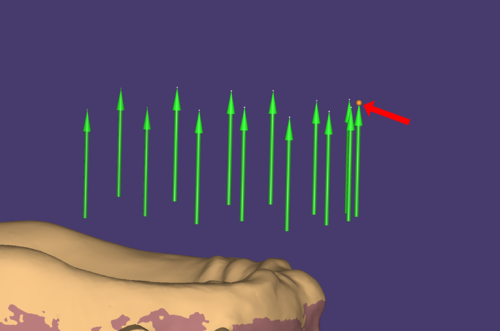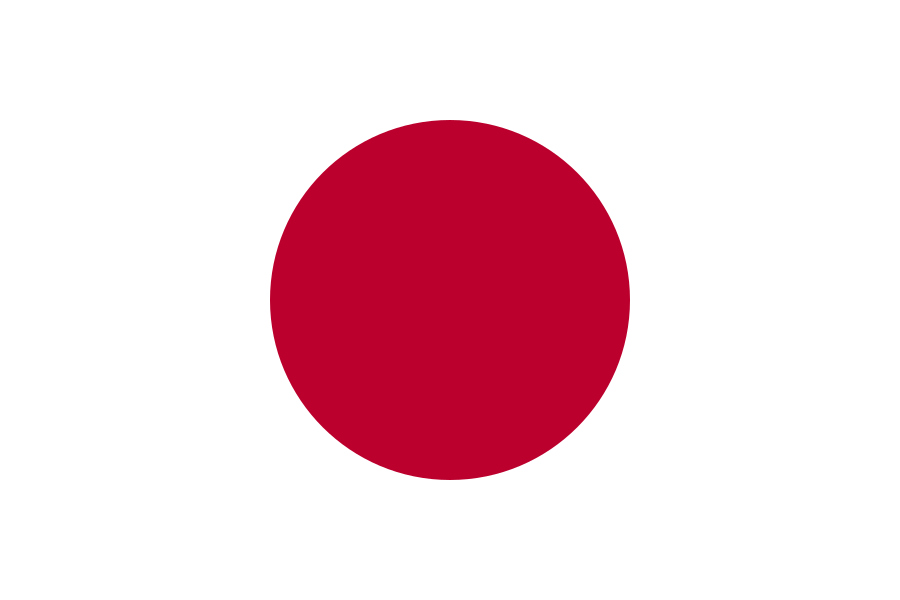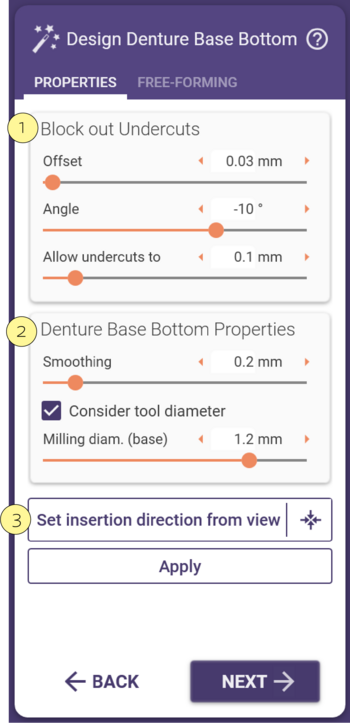Design Denture Base Bottom
The denture is prepared for mechanical fabrication in the Wizard step Design Denture Base Bottom. This means that the model is blocked out, so that all areas of the basal denture surface are accessed with the possible travel paths of the milling machine and the denture base does not exceed a blank height.For this reason the milling direction, which is set using the path of insertion, should be selected as perpendicular to the denture base as possible.

The path of insertion is determined using visualised arrows by visualising the model from the side and moving the model into the required position using a sphere on the tip of the arrow while keeping the left mouse key pressed.

|
Control the undercut block out angle and thickness [1]. As the model is blocked out in an overall uniform thickness, irregularities of the model surface such as extraction wounds or mucosal folds are transferred to the blocked out area.
The Smoothing slide control [2] can be used to define how much the irregular blocked out area should be flattened out.
By selecting the Set insert direction from view button [3] the path of insertion is set using the current view with a click of the mouse.
|
|
To add or remove material, use Add/Remove, and to smooth material, activate Smooth/Flatten [4]. Click and hold the mouse button on the parts you'd like to add or smooth
You can add an offset to scan data by using the Offset to scan data with brush [5].
|
 |
- Hold SHIFT to flatten (super-smoothing)
- Hold CTRL for a more shape-preserving smoothing
- While in Add/Remove mode, hold CTRL+SHIFT to smooth/flatten without having to activate the Smooth/Flatten button
|
By using Offset to scan data with Brush, you can create lateral and mid-palate gap distances for palatal depth adaptation to the denture base.














